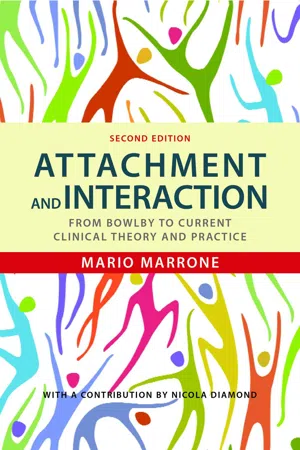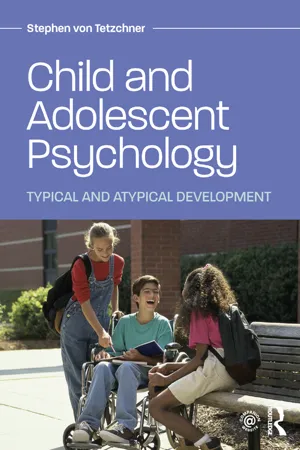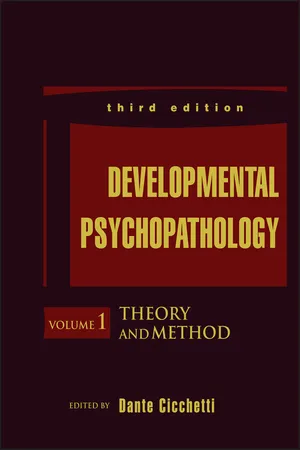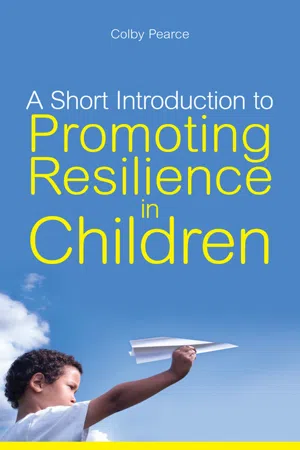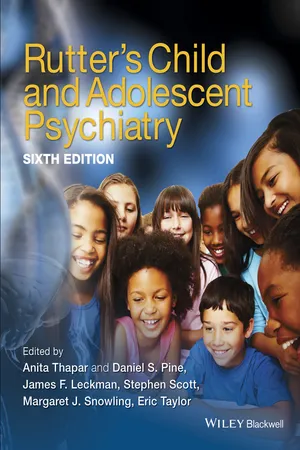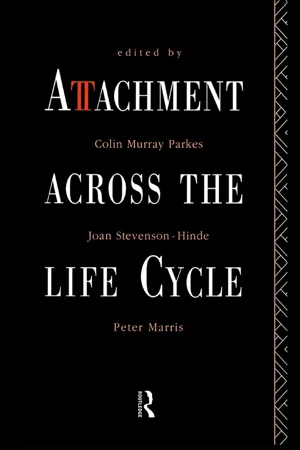Psychology
Attachment
Attachment refers to the emotional bond that forms between an infant and their primary caregiver, typically the mother. This bond is crucial for the infant's emotional and social development, as it provides a sense of security and trust. The quality of attachment can influence the individual's relationships and behavior throughout their life.
Written by Perlego with AI-assistance
Related key terms
10 Key excerpts on "Attachment"
- eBook - ePub
Great Ideas in Psychology
A Cultural and Historical Introduction
- Fathali Moghaddam(Author)
- 2013(Publication Date)
- Oneworld Publications(Publisher)
11Attachment
There is a long history, going back at least to Plato’s writings in the Republic and the Laws some twenty-five centuries ago, to the view that how infants are cared for and socialized will in important ways influence their later psychological development and life as adults. In modern psychology, this general idea has evolved into a more focused empirical exploration of the relationship between a primary caregiver, usually the mother, and the infant. A core organizing idea behind this modern research is Attachment , an observed bonding between the young of many species and their primary caregivers. In human populations, Attachment typically involves uniquely strong emotional ties between infants and their mothers.Considered in the context of modern psychology, the idea of Attachment is rather special in a subtle and important way: Attachment is focused on relationships, on the world “out there,” on what is collaboratively constructed and collectively upheld between the infant and the caregiver. Attachment is an outcome of what the caregiver and the infant do together, rather than being solely dependent on the characteristics and actions of either one of them. Attachment is about the shared world outside, rather than just the private world inside; it is about the characteristics of the larger social world, rather than dispositional characteristics within individuals. Thus, Attachment moves us away from the individualism and reductionism pervading traditional Western psychology and provides a fruitful link with some alternative psychological ideas derived from other, more critical and social traditions, such as the idea of the zone of proximal development (see chapter 10 - eBook - ePub
From Birth to Sixteen
Children's Health, Social, Emotional and Linguistic Development
- Helen Cowie(Author)
- 2019(Publication Date)
- Routledge(Publisher)
Attachment theory , as initially proposed in detail by Bowlby (1969), grounded in his therapeutic work as a child psychiatrist and psychoanalyst. Bowlby’s theory has been greatly extended and refined by his followers. Over the past sixty years, researchers and practitioners have gathered a substantial body of knowledge about the significance of the bond between parents and their children. The concept of Attachment integrates social, emotional and cognitive aspects of the child’s mind.Key concepts in Bowlby’s (1969) original formulation of the theory are affectional bonds , Attachment and Attachment behaviour .• An affectional bond is an enduring emotional tie to a specific individual. A person can be attached to someone who is not in turn attached to him or her.• Attachment is a type of affectional bond characterized by physical proximity-seeking, comfort and security, separation upset and reciprocity.• Attachment behaviour is any form of behaviour that results in a person attaining proximity to some other differentiated and preferred individual usually conceived as stronger and/or wiser; As such, the behaviour includes the following: clinging, crying, calling, greeting, smiling and some more sophisticated forms.Bowlby proposed that the child uses the parent or primary caregiver as a secure base to return to regularly for reassurance. The need to explore takes the infant away from the caregiver and counteracts the need for proximity. A balance is struck between the two opposing tendencies – the need for proximity and the need to explore. In a situation of threat, Attachment behaviours, such as clinging, will be reactivated. Bowlby (1969) described four phases in the development of Attachment (Box 3.1 - eBook - ePub
Attachment and Interaction
From Bowlby to Current Clinical Theory and Practice Second Edition
- Mario Marrone(Author)
- 2014(Publication Date)
- Jessica Kingsley Publishers(Publisher)
CHAPTER 2 Attachment Theory Introduction Bowlby said in 1977:What for convenience I am terming Attachment theory is a way of conceptualizing the propensity of human beings to make strong affectional bonds to particular others and of explaining the many forms of emotional distress and personality disturbance, including anxiety, anger, depression and emotional detachment, to which unwilling separation and loss give rise.In the above paragraph we can see that Bowlby defined Attachment theory as a body of explanations. Furthermore, these explanations are essentially concerned with two issues: (1) explaining why human beings tend to make strong, selective and durable bonds; and (2) explaining how the disruption or threats of disruption of these bonds can cause painful emotions and, ultimately, psychopathology.Therefore, Bowlby’s initial position reflected three main concerns: to amend psychoanalytic theory in the light of new discoveries, to view psychopathology in a developmental context, and to place intimate relationships at the centre of developmental psychology.Bowlby added:Advocates of Attachment theory argue that many forms of psychiatric disturbance can be attributed either to deviations in the development of Attachment behaviour or, more rarely, to failure of its development; and also that the theory casts light on both the origin and the treatment of these conditions.Why a new theory?Attachment theory was formulated in order to explain observed facts in a way which was more coherent with what was observed. The subjects of observation are the most common features of everyday life: the formation, renewal and loss of emotional ties with specific people and the emotions that emerge in the course of these events.Although such processes were observed and explained by psychiatrists, psychologists and psychoanalysts, Bowlby came to the conclusion that existing theories did not strike the right chord. More than any other branch of medicine or psychology, psychoanalysis concerned itself with the study of emotional life and relationships. Yet the over-riding importance of primary Attachment relationships was overshadowed by theories that put sexuality and a hypothetical ‘death instinct’ at the very centre of human motivation. - eBook - ePub
Child and Adolescent Psychology
Typical and Atypical Development
- Stephen von Tetzchner(Author)
- 2018(Publication Date)
- Routledge(Publisher)
19 AttachmentF rom birth throughout the life span, human beings are oriented toward social stimulation and participation, making social relations a core area of developmental psychology. This chapter is about children’s early social relations and the influence they may have on the child’s social functioning and development. According to Attachment theories, early close relationships provide children with knowledge about social relations that form the basis for how they meet other people and contribute to forming their later reactions and behaviors.Attachment behavior is defined as “any behavior that results in a person attaining or maintaining proximity to some other clearly identified individual who is conceived as better able to cope with the world” (Bowlby, 1982, p. 669). Thus, the function of Attachment behaviors is to ensure a feeling of safety by reducing the physical distance to specific individuals, Attachment figures. If a child’s Attachment system is to perform its function, Attachment figures must respond to the child’s Attachment behavior. Adults react to signaling behavior by reducing the distance to the child when necessary, calling the child or moving closer when the distance exceeds a certain limit, for example when the child has wandered off (Bowlby, 1969).THEORETICAL PERSPECTIVES ON Attachment
Views differ with regard to the basis of Attachment and the possible outcomes of different types of Attachment. John Bowlby presented the first comprehensive theory of Attachment and laid the foundation for all later theories (Hinde, 2005). Bowlby’s ethological theory will therefore be presented first and in particular detail, although some other views predated his.Seeking security by the mother.Ethological theory
Attachment has to do with relationships, whose biological basis, according to Bowlby (1969), is survival. From an evolutionary perspective, the survival value of Attachment behavior lies in the fact that human infants would be unable to survive without a caregiver. The same applies to infant monkeys, although their development is somewhat faster (Suomi, 2008). The imprinting behavior of ducks and other birds seems to fulfill a similar function as Attachment behavior in humans (see Figure 19.1 - eBook - ePub
- Dante Cicchetti(Author)
- 2015(Publication Date)
- Wiley(Publisher)
the field of developmental psychology in the last 60 years. By characterizing the interconnections and mechanisms that mediate between early experiences in primary Attachment relationships and long-term emotional adjustment across the life span, Attachment theory typifies, and indeed has made major contributions to, the developmental psychopathology approach (Cicchetti & Cohen, 1995; Rutter & Sroufe, 2000). The field of Attachment—although not without a host of outstanding questions, conundrums, and fruitful seams of new research—could reasonably be described as a mature discipline, having tested, confirmed or clarified many of its major theoretical assertions. The theory remains a highly influential and important way of understanding the nature of a child's tie to primary caregivers, which coherently integrates data and theory from social-developmental psychology, cognitive psychology, life span developmental psychology, evolutionary psychology, and ethology. Its relevance for understanding emotional and behavioral maladjustment, and its value as a framework for intervention and prevention, seem undeniable. In this chapter, our goal is to provide a comprehensive overview of Attachment theory and research from its earliest origins to the very latest research findings, focusing on topics of most direct relevance for understanding the development of psychopathology. We begin with an overview of the historical beginnings of Attachment theory and then outline the fundamental tenets of the theory. Next, we review the empirical literature on the developmental antecedents and consequences of Attachment security and insecurity, exploring what is known about mediating mechanisms in the evolution of maladjustment. Next, we turn to work on adolescent and adult Attachment - Colby Pearce(Author)
- 2011(Publication Date)
- Jessica Kingsley Publishers(Publisher)
CHAPTER 3PSYCHOLOGICAL INFLUENCES – AttachmentConsider which of the following children is most likely to be the resilient one:There is nothing either good or bad, but thinking makes it so.27(Shakespeare, Hamlet, Act II, Scene II)1. the child who is always telling others how good he is2. the one who complains that he is no good at anything, or3. the child who says very little about what he is good at and not good at?Then think about which of these other children is most likely to be the resilient one:1. the child who never asks for help when trying something new2. the one who is always asking for help when trying something new, or3. the child who sometimes asks for help when trying something new?The answer to both questions is the third child. The reason lies in our understanding of Attachment and the influence it has over the way in which children think about themselves, others and their world.So what is Attachment? Attachment is the term used for the special relationship children develop towards their primary caregivers during infancy. It is special because these are the people the infant learns to trust and depend upon to look after them. It is also special because infants expect other adults in a caregiving role to be like their primary caregivers. That is, Attachment relationships formed in infancy directly influence the child’s expectations about all other interactions and relationships with others.Primary caregivers are the people who provide day-to-day care to the child during infancy. Primary caregivers are usually mothers and fathers, though they can also include relatives and regular child carers; in fact, anyone who provides physical and emotional care on a continuous and consistent basis.Primary caregivers towards whom a child forms an Attachment are called ‘Attachment figures’. A child’s Attachment to their Attachment figures incorporates feelings of emotional connectedness and an expectation that these people can be depended upon to support them in their efforts, respond to their needs and keep them safe from harm.- eBook - ePub
What Makes Us Stay Together?
Attachment and the Outcomes of Couple Relationships
- Rosetta Castellano, Patrizia Velotti, Giulio Cesare Zavattini(Authors)
- 2018(Publication Date)
- Routledge(Publisher)
This behaviour becomes particularly evident at times of distress, when a partner is needed for caregiving and for providing the “safe haven” and “secure base” functions of the relationship. But, in contrast to the Attachment relationships of childhood, adult Attachment does not necessarily require physical closeness (as a child might need from a mother), but rather a sense of protection. In other words, an adult needs to feel that their partner is emotionally close, not necessarily to have them physically present. Adult Attachment bonds, like those in childhood, are emotionally intense and demanding, and are defined by the quality of the relationship between the partners. As Bowlby wrote: “If it [Attachment] goes well, there is joy and a sense of security. If it is threatened, there is jealousy, anxiety, and anger. If broken, there is grief and depression” (Bowlby, 1988, p. 4). In this sense, it could be said that the most important function of Attachment is linked to the capacity to regulate emotion, which, as we will see later, gives the partner a primary role in providing a sense of psychological wellbeing (Schore, 2003; Velotti, 2009). The relationship between two people who “fall in love”, or who have a passionate affair that fades over time, cannot be referred to as an Attachment bond. Attachment bonds are different from the attraction that draws individuals together at the start of a relationship. As in childhood, adult Attachment bonds must be enduring, not transitory. 2 Attachment research has shown how, in romantic relationships, Attachment bonds are developed through a series of sequences, and that it is necessary for the four features of Attachment described earlier to be progressively transferred to the partner during the course of the relationship (Barone & Del Corno, 2007; Cassibba, 2003; Weiss, 1991; Zeifman & Hazan, 2008) - eBook - ePub
- Anita Thapar, Daniel Pine, James F. Leckman, Stephen Scott, Margaret J. Snowling, Eric A. Taylor(Authors)
- 2015(Publication Date)
- Wiley-Blackwell(Publisher)
Chapter 6 Attachment: normal development, individual differences, and associations with experience Mary Dozier1 and Kristin Bernard21 Department of Psychological and Brain Sciences, University of Delaware, Newark, DE, USA2 Department of Psychology, Stony Brook University, Stony Brook, NY, USAAccording to John Bowlby (1969/1982), the Attachment system evolved to enhance reproductive fitness. Infants develop Attachments to figures who are “older and wiser” than themselves and seek to maintain proximity with these Attachment figures under threatening conditions. The infant's behavioral repertoire of crying, smiling, clinging and following represents an organized system, designed to maintain or restore proximity to the caregiver (Sroufe & Waters, 1977a, b; Bowlby, 1988). By the time the infant is capable of crawling or walking, the Attachment system has developed fully such that the infant does not want to move far from the parent except when circumstances are familiar (Bretherton, 1985). Under conditions of threat, when proximity is especially important to survival, the need for proximity to the caregiver is intensified (Bowlby, 1969/1982; Rutter et al., 2009). For example, when the infant is fearful of a stranger or a startling sound, the caregiver is sought out for protection, with the response intensified in proportion to the perceived threat. Given the basic evolutionary function of this system, Attachments are expected to develop in virtually all ordinary childrearing conditions. Although the Attachment system may have special significance for the infant, Attachments are thought to remain important for humans throughout life.Historical context of the development of Attachment theory
Attachment theory was developed in response to psychoanalytic and social learning theories of the time, and in the context of observations of the pernicious effects of privation on human and non-human young, and a burgeoning literature on ethology and evolution. John Bowlby articulated what has come to be known as Attachment theory. Mary Ainsworth played a critical role as an astute observer of individual differences in Attachment, and on the basis of these observations, in developing a system for classifying infants' Attachment quality. - eBook - ePub
- John Bowlby(Author)
- 2012(Publication Date)
- Routledge(Publisher)
7 The Role of Attachment in Personality Development DOI: 10.4324/9780203440841-7Evidence regarding the role of Attachment in personality development has been accumulating apace during the 1980s. Earlier findings have been replicated on samples of diverse origin; methods of observation have been refined and new methods introduced; and the role of easy two-way communication between parent and child in making for healthy emotional development has been emphasized. Since I believe this new work to have far-reaching clinical implications, my aim in this lecture has been to present a review of these findings in a form suited to those working as psychotherapists in the mental health field.For the convenience of the reader I begin by restating in summary form some of the features most distinctive of Attachment theory.Some Distinctive Features of Attachment Theory
It will be remembered that Attachment theory was formulated to explain certain patterns of behaviour, characteristic not only of infants and young children but also adolescents and adults, that were formerly conceptualized in terms of dependency and over-dependency. In its original formulation observations of how young children respond when placed in a strange place with strange people, and the effects such experiences have on a child’s subsequent relations with his parents, were especially influential. In all subsequent work theory has continued to be tied closely to detailed observations and interview data of how individuals respond in particular situations. Historically the theory was developed out of the object-relations tradition in psychoanalysis; but it has drawn also on concepts from evolution theory, ethology, control theory, and cognitive psychology. One result is the reformulation of psychoanalytic metapsychology in ways compatible with modern biology and psychology and in conformity with the commonly accepted criteria of natural science (see Lecture 4). - eBook - ePub
- Colin Murray Parkes, Joan Stevenson-Hinde, Peter Marris(Authors)
- 2006(Publication Date)
- Routledge(Publisher)
Part IThe Nature of Attachment
Passage contains an image
Chapter 1 The roots and growing points of Attachment theory
1Inge Bretherton
Attachment theory in its current form is the joint work of John Bowlby and Mary Ainsworth. John Bowlby, using concepts from ethology, cybernetics, and psychoanalysis, formulated the basic outlines of the theory. We owe to him a new way of thinking about the infant’s tie to the mother, and its disruption through separation and deprivation. Mary Ainsworth not only translated the basic tenets of Attachment theory into empirical findings, but also helped us to expand the theory itself. Her two major theoretical contributions were the explanation of individual differences in Attachment relations and the concept of the caregiver as secure base.This paper delineates the historical development of Attachment theory. It is divided into four parts. First, I show that the basic ideas guiding both protagonists’ later contributions have roots in their early professional career. I then go on to discuss the development of the theory, laying out the sequence in which Bowlby proposed its basic postulates at the same time as Mary Ainsworth began to test and expand them in her empirical studies. The third part of the paper is devoted to a brief review of work on the validation and consolidation of Attachment theory. Finally, I discuss future directions of Attachment theory and research.ROOTS
John Bowlby
John Bowlby was born in 1907. I am sure that experiences in his childhood must have played a role in directing his interest toward the study of Attachment. However, Bowlby himself begins his intellectual autobiography with studies at the University of Cambridge where he read medicine, upon the advice of his surgeon father (see interviews with Senn (1977a) and Smuts (1977)). In his third year of study, John Bowlby became drawn to what would later be known as developmental psychology, and he temporarily gave up plans for a medical career.
Learn about this page
Index pages curate the most relevant extracts from our library of academic textbooks. They’ve been created using an in-house natural language model (NLM), each adding context and meaning to key research topics.


